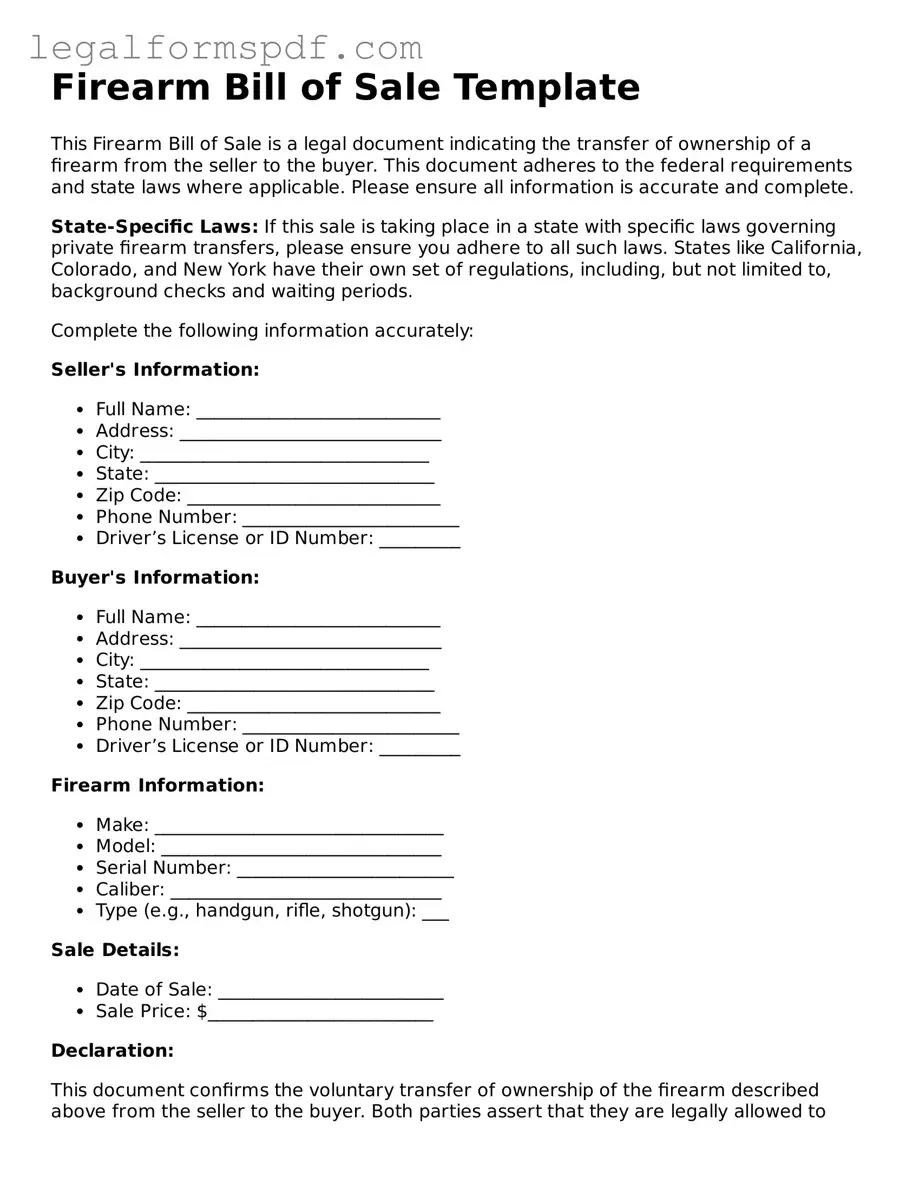What is a Firearm Bill of Sale?
A Firearm Bill of Sale is a legal document that records the sale and transfer of a firearm from a seller to a buyer. It outlines the details of the transaction, including the identities of both parties, the date of sale, and specific information about the firearm such as make, model, and serial number.
Why is a Firearm Bill of Sale necessary?
This document serves multiple purposes. It provides legal proof of the transfer of ownership, it can be used for personal record-keeping, and it may be required by state law. Additionally, a Firearm Bill of Sale helps ensure that the sale complies with federal and state firearm laws.
What information should be included in a Firearm Bill of Sale?
A comprehensive Firearm Bill of Sale should include the full names and addresses of both the seller and the buyer, the date of the sale, the price, a detailed description of the firearm (make, model, caliber, and serial number), and any warranties or conditions. It should also have signatures from both parties and, if required, a witness or notary public.
Is notarization of a Firearm Bill of Sale required?
Not all states require the notarization of a Firearm Bill of Sale. However, having it notarized adds a level of legal protection and authenticity to the document, making it harder to dispute. It's recommended to check local laws to determine if notarization is necessary in your jurisdiction.
Do both the buyer and the seller need a copy of the Firearm Bill of Sale?
Yes, it's important that both the seller and the buyer retain a copy of the Firearm Bill of Sale. Having a copy ensures that both parties have a record of the transaction details and the firearm's serial number, which might be needed for future reference or proof of ownership.
How does a Firearm Bill of Sale protect the buyer?
For the buyer, a Firearm Bill of Sale serves as proof of purchase and ownership. It shows that the buyer lawfully acquired the firearm and can be used to verify the firearm's history and legality. It also ensures that the seller has agreed to the sale under the terms listed.
How does a Firearm Bill of Sale protect the seller?
For the seller, it provides evidence that they legally transferred the ownership of the firearm to the buyer, releasing them from liability for anything that occurs with the firearm after the sale. It also confirms that the buyer agreed to the terms of sale and acknowledged the condition of the firearm.
Can a Firearm Bill of Sale be used for all types of firearms?
Yes, a Firearm Bill of Sale can be used for the sale of any type of firearm, including handguns, rifles, and shotguns. The document should specify the type of firearm to ensure clarity and legal compliance.
What happens if you don't use a Firearm Bill of Sale?
Not using a Firearm Bill of Sale can lead to legal complications. Without it, there may be no proof of the transaction or transfer of ownership, making it difficult to prove legality of possession. It could also result in liability issues for the seller if the firearm is later used in a crime.
Are there any states where a Firearm Bill of Sale is not required?
Some states do not legally require a Firearm Bill of Sale for private transactions. However, it's strongly recommended to use one regardless of state requirements to ensure a clear record of the sale and transfer of ownership for both parties' protection.
